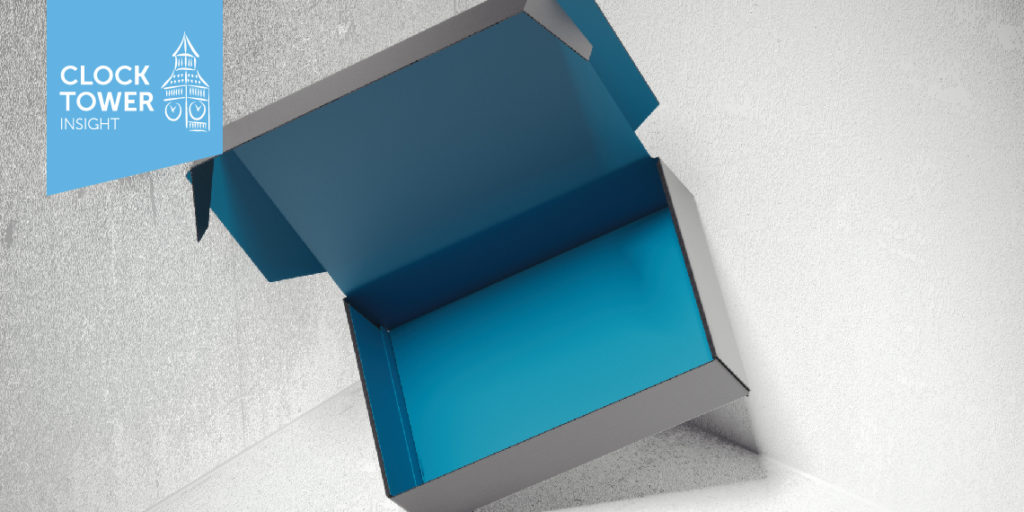Product packaging is often the introduction of your product to a new consumer. Packaging sends your brand’s message to the buyer: this is us, this is what we stand for. We view product packaging as an opportunity to make a positive impression both before and after a purchase. Packaging is part of your branding, but how can it effectively communicate your message?
Today, we will review how packaging tells customers who you are as a company, how your company cares for the environment, how to select the right packaging for your brand, and some examples of iconic brand packaging over the years.
Packaging Informs Customers About Your Company
According to ABC Packaging Direct, effective packaging allows your company to communicate three key concepts:
- Your story
- How your company feels about your customers
- How your company feels about the environment
We tend to think of packaging as just a blank canvas upon which some graphic design work can showcase logos and brand art. Packaging is much more than that. The packaging itself says a lot about your company and what you stand for. Consider items one (1) and two (2) from the above list.
A company which uses multiple packaging materials, tons of art work, included literature, and several add-ons may be conveying a luxury appeal. The same product packaged in plain, economical packaging with minimal peripherals may be conveying a responsible, no-nonsense approach. Consumers will pick up on these distinctions, and packaging choices will certainly have an impact on customer experience.
The Importance of Environmentally Conscious Packaging
As per a December 2018 poll conducted by Yale and George Mason University, 62% of the American populous “now understands that global warming is caused mostly by human activities, an increase of 10 points…(since 2015)”. This tells us two things: that the public is highly environmentally conscious and that trends show that this view of environmentalism is on the rise.
Recently, online retailers such as Amazon have come under fire for irresponsible packaging. Pictures have flooded the internet of tiny products being engulfed in packing materials and shoved into comically oversized boxes. Amazon has responded by tightening up packaging and reducing waste.
When it comes to your brand, it must be determined how much of a priority environmentalism and intelligent packaging will be. Younger customers in particular are more conscious of packaging waste and are more likely to have a negative experience due to unnecessary packaging.
How Can I Choose the Right Packaging for my Product?
As we have established, packaging is often the first opportunity your brand will have to make a tactile impression on a customer. Packaging must fit your brand’s identity and be practically appropriate for the product within. Here are some high level considerations when choosing your ideal product packaging:
Cost efficiency – as much as we’d all love sleek packaging with zero excess waste, cost is always a factor. If your product is sold on value, economy packaging may be appropriate. If your product sways towards luxury, a slightly more expensive package could be the way to go.
Effectiveness – not all products are appropriate for all types of packaging. A ream of paper will not fit into a mason jar, nor will salad dressing fit into a cardboard box.
Minimal Waste – in previous sections we discussed this issue as an environmental concern. It is also a concern in terms of storage and shipping. Unnecessarily large and/or heavy packaging will increase overall cost.
Fit with your brand – last but not least, every packaging choice made is conveying a message to your customers. This is who we are. Packaging should match your brand message.
Iconic Product Packages in History
To illustrate the power of packaging and branding, here are some famous examples of a package raising a product to new heights:
- Heinz ketchup bottle – simple, bold, iconic, effective. The Heinz ketchup bottle has been a staple in American homes since 1876. Even now that glass bottle production has ceased, the Heinz logo implies the classic design.
- Amazon box – yes, we have already given Amazon flack earlier in this very article. Still, it is undeniable that coming home from a long day to a simple brown box can be exciting. Amazon took a plain, economical design, and made it a part of their brand.
- Campbell’s soup can – before Andy Warhol confused the world by painting some cans of soup, the Campbell’s design was already well known.
- Tiffany & Co. little blue box – not exactly an everyday item, but recognizable nonetheless. That is the power of packaging married with brand identity.
Clock Tower Insight Enhances Customer Experience Through Thoughtful Packaging
Clock Tower Insight helps our clients to build their brands through any means necessary. We believe in using cutting edge research to deliver unparalleled insight and understanding into today’s rapidly changing marketplace. With over 15 years of dedicated experience, our marketing insight has helped organizations including Belle Tire, Nielsen, Orbitz, and Kraft Foods.
We are proud to offer a number of services to our clients, including customer experience management, brand positioning in the marketplace, market sizing, market testing, and more.

